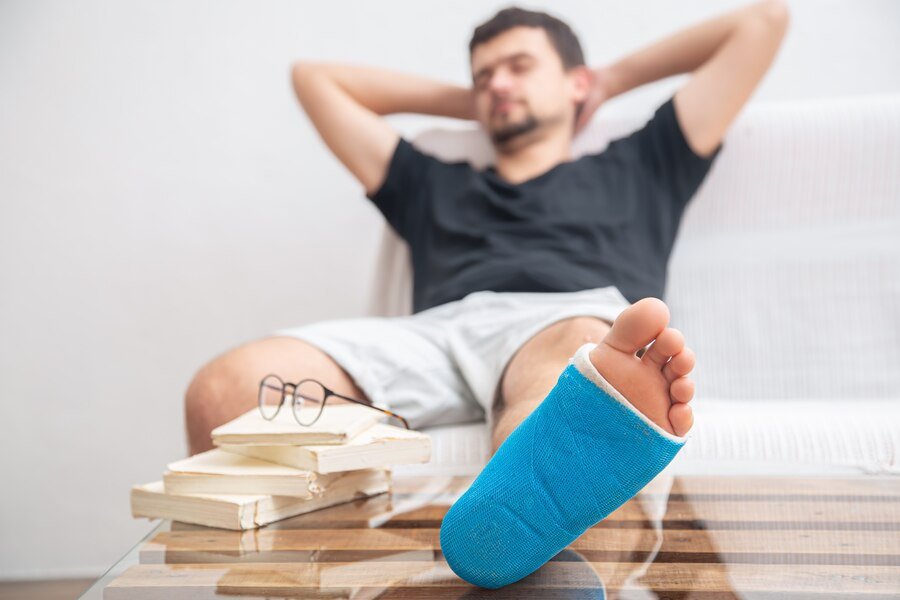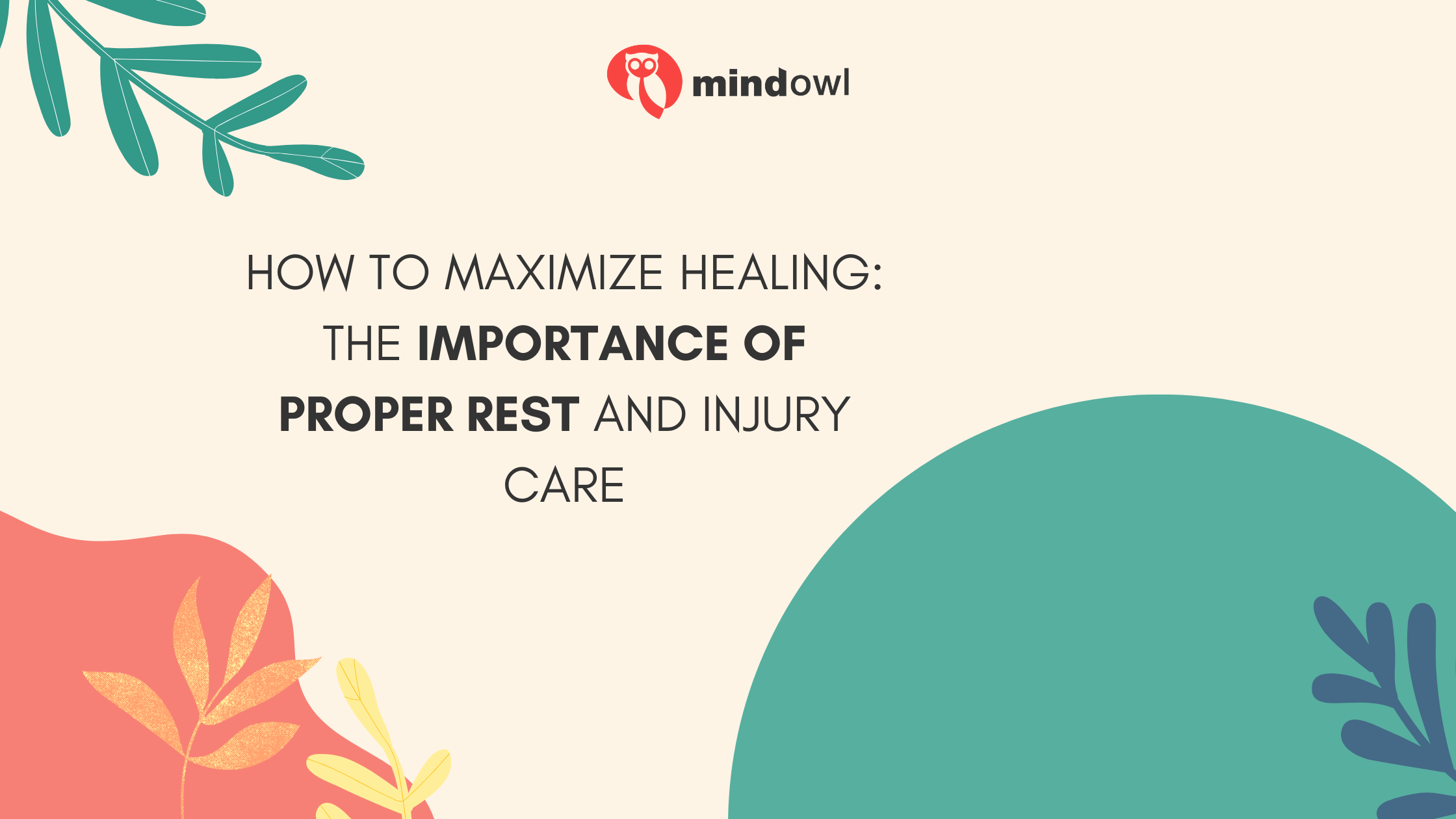
Injuries can significantly impact our daily lives, whether they occur during sports, work, or leisure activities. Understanding how to maximize healing is crucial for recovery. One vital aspect of healing that is often overlooked is the importance of proper rest and injury care. Recognizing this can make the difference between a quick recovery and prolonged pain or complications. This article discusses essential strategies to enhance healing, emphasizing rest, the role of injury care, and when to seek professional help.
The Role of Rest in Recovery
Rest is not merely a break from physical activity; it’s a critical component of the healing process. When the body sustains an injury, it initiates a complex series of biological reactions designed to heal the damaged tissues. During this time, rest allows the body to focus its energy on repair, and using it with pain alleviation is essential to promoting recovery. Studies show that inadequate rest can lead to delayed healing times and increased levels of pain. Healing relies heavily on the body’s ability to regenerate cells and restore function. For instance, a lack of rest can hinder the production of collagen, which is essential for healing tendons and ligaments. Thus, prioritizing rest ensures that the body has the necessary resources to recover effectively, significantly shortening rehabilitation duration.
What Proper Injury Care Entails
Proper injury care encompasses more than just resting; it involves a systematic approach to treating injuries that maximizes healing potential. Two key components are the RICE protocol and professional evaluation.
The RICE Method: Rest, Ice, Compression, Elevation
The RICE method is a widely endorsed procedure to treat most acute injuries, particularly soft tissue injuries like sprains and strains. RICE stands for:
- Rest: Limiting movement of the injured area to prevent further damage.
- Ice: Applying ice packs every 2-3 hours to reduce swelling and numb pain.
- Compression: Using bandages or wraps to limit swelling while supporting the injured area.
- Elevation: Keeping the injured area elevated above the heart to minimize swelling.
Research indicates that implementing RICE can reduce recovery time by as much as 50% in certain cases. This method helps manage pain and prevents further injury, allowing the healing process to take place more efficiently.
Seeking Professional Help
While home care is vital, some injuries necessitate professional evaluation. Seeking legal help from personal injury experts is paramount in injuries caused by the negligence of others. A personal injury case can help you claim compensation for medical expenses and lost wages, giving you peace of mind to focus on healing. Medical treatment is essential for severe injuries or if the pain worsens over time. Professionals can utilize advanced imaging techniques to assess the degree of damage and offer tailored treatment plans. These plans might integrate physical therapy, medication, or even surgical options in more severe cases. Notably, delays in seeking professional care can result in increased recovery time and complications. Prompt evaluations also provide the reassurance that a complete and effective healing process is underway.
Nutrition and Hydration for Healing
Proper nutrition plays a substantial role in healing any injury. Nutrients supply the building blocks necessary for repair and can accelerate recovery. A diet rich in proteins, vitamins C and D, calcium, and omega-3 fatty acids supports tissue regeneration and aids in reducing inflammation. Hydration also cannot be overlooked. Drinking enough water enhances circulation, which helps deliver essential nutrients to healing tissues. Dehydration can slow recovery and heighten feelings of discomfort, which can hinder the motivation to adhere to recovery plans. Therefore, maintaining proper hydration is as important as a balanced diet for injury recovery.
The Psychological Component of Healing
Healing is a holistic process that encompasses not just the physical but also the psychological aspects of recovery. Mental well-being greatly impacts physical rehabilitation, and strategies like mindfulness and relaxation techniques can help reduce anxiety. Studies have shown that individuals who engage in mental health practices during their recovery tend to heal faster than those who don’t. Moreover, setting achievable rehabilitation goals can aid in maintaining a positive outlook during the recovery process. This approach encourages motivation and engagement with physical therapy and exercise regimens necessary for recovery.
Rest and Gradual Return to Activity
As recovery progresses, gradual reintroduction to activity is crucial. Jumping back into a full schedule too quickly can lead to setbacks and reinjury. Slow progression allows the body to adjust, regaining strength and flexibility without overwhelming the healing tissues. Typically, following a structured rehabilitation plan tailored by physical therapists can help ensure safe progression. They can provide advancements on exercises and activities to maintain motivation while monitoring for any signs of discomfort.
The Importance of Monitoring Your Recovery
Continuously monitoring the recovery process is vital for long-term success. Keeping track of changes in symptoms and function helps measure improvement and indications of potential issues. Journaling can be an effective tool to document daily progress, which can then be shared with healthcare providers. This practice can lead to timely interventions if setbacks occur. The clearer the picture of recovery maintains, the more accurately healthcare professionals can adjust treatment plans effectively.
Emotional Support During Healing
Injuries often lead to emotional turmoil caused by the inability to perform routine activities. Seeking social support or joining support groups during recovery can facilitate emotional healing. Conversations with others facing similar challenges can improve motivation and foster a sense of belonging, which is beneficial for mental health. Engaging friends and family can also provide encouragement. A healthy support system plays an essential role in maintaining a positive outlook during recovery, ultimately aiding the healing process.

Maximizing healing involves focusing on proper rest and attentive injury care. Employing the RICE method, nutritional considerations, and professional guidance significantly assists recovery. Alongside physical aspects, addressing emotional health and monitoring progress can further facilitate healing. Ultimately, a comprehensive approach ensures that one can recover effectively and return to their full range of activities.
MindOwl Founder – My own struggles in life have led me to this path of understanding the human condition. I graduated with a bachelor’s degree in philosophy before completing a master’s degree in psychology at Regent’s University London. I then completed a postgraduate diploma in philosophical counselling before being trained in ACT (Acceptance and commitment therapy).
I’ve spent the last eight years studying the encounter of meditative practices with modern psychology.

